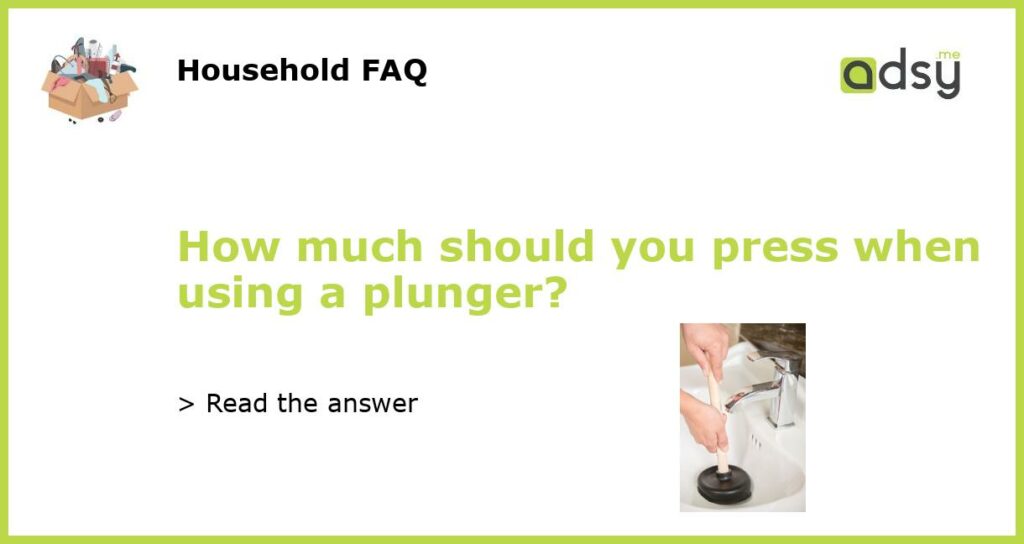How Much Pressure Should You Apply When Using a Plunger?
Using a plunger can be an effective way to clear clogged drains and toilets. However, knowing how much pressure to apply when using a plunger is important to avoid causing further damage or creating a mess. Applying too much force can lead to broken pipes or splashing water, while applying too little may not provide enough suction to clear the clog. So how much pressure should you apply when using a plunger? Let’s find out.
Understanding the Basics of Plunging
Before we get into the ideal amount of pressure to use, it’s important to understand the basics of plunging. A plunger works by creating a seal around the drain or toilet bowl and creating suction through the up and down motion. This suction can dislodge the clog and allow it to move through the plumbing system. It’s important to ensure a tight seal between the plunger and the drain or toilet bowl to maximize the effectiveness of plunging.
Applying the Right Amount of Pressure
When it comes to applying pressure with a plunger, it’s best to start with moderate force and gradually increase if necessary. Begin by placing the plunger over the drain or toilet bowl, ensuring a tight seal. Then, push down gently to expel any excess air and create suction. Once the plunger is pressed down, begin the up and down motion, focusing on creating suction rather than sheer force. The goal is to dislodge the clog, not to force it through the drain or toilet.
Monitoring the Progress
While using a plunger, it’s important to monitor the progress and adjust the pressure as needed. If the clog is not clearing, you can try increasing the pressure slightly. However, be cautious not to apply excessive force that may result in damage. If you are still unable to clear the clog after adjusting the pressure, it may be necessary to seek professional plumbing assistance.
Tips for Effective Plunging
Here are some additional tips to ensure you’re applying the right amount of pressure when using a plunger:
- Use a plunger specifically designed for the type of drain or toilet you are unclogging. Different plungers are designed for different purposes, such as sink plungers, toilet plungers, or shower plungers.
- Be patient and persistent. It may take several attempts before a clog is cleared. Avoid the temptation to use excessive force.
- If plunging a toilet, make sure there is enough water in the bowl to create a seal. If the water level is too low, add some water before using the plunger.
- Consider using a lubricant, such as dish soap or petroleum jelly, on the edge of the plunger to create a better seal.
- If you are unsure or uncomfortable using a plunger, it’s best to contact a professional plumber to avoid further damage or injury.
In summary, when using a plunger, it’s important to start with moderate pressure and gradually increase if necessary. You should focus on creating suction rather than applying excessive force. Monitor the progress and adjust the pressure as needed. Following these guidelines will help you effectively clear clogs without causing any damage or mess.






